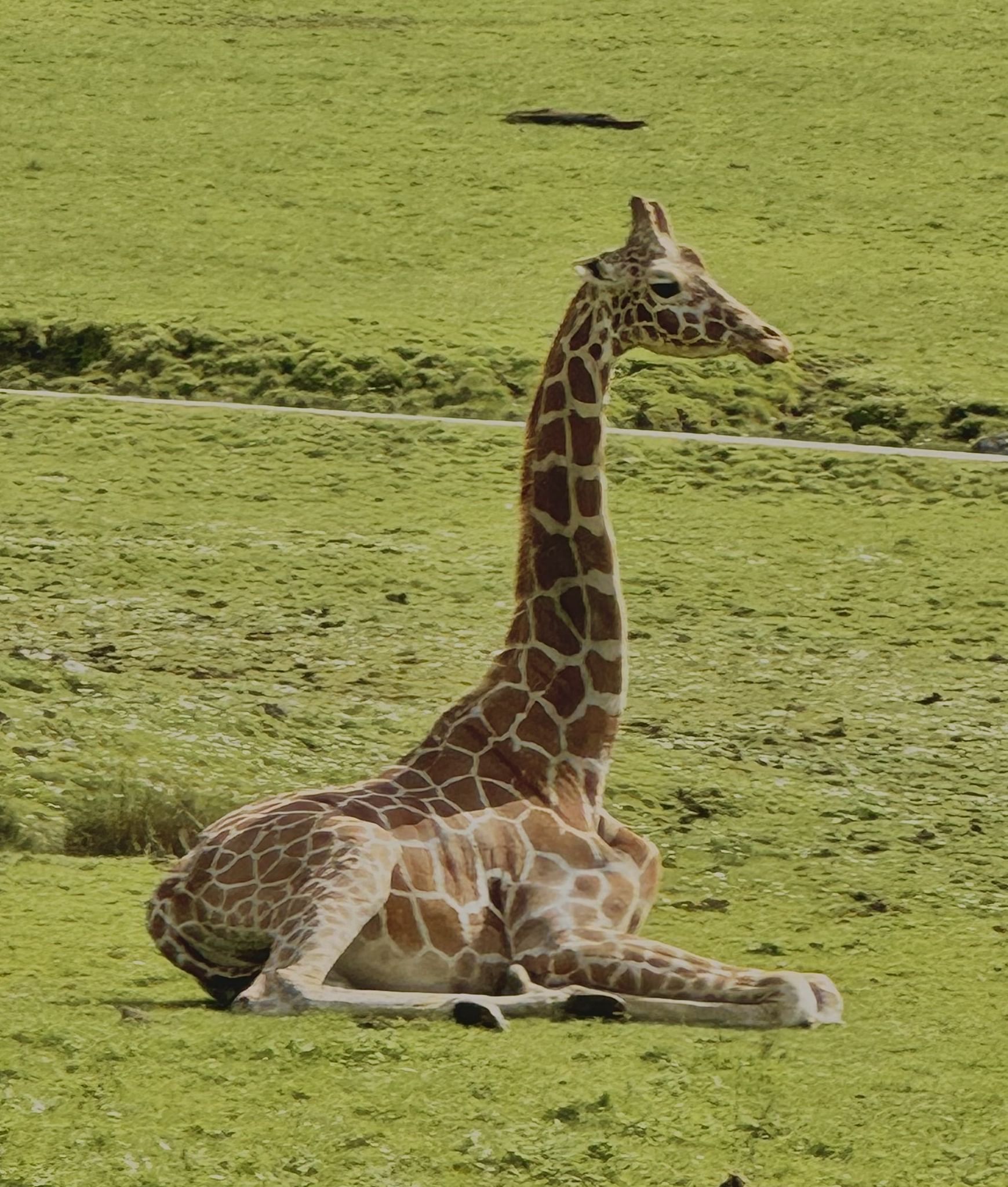– Giraffe sleep patterns and behaviors
– The role of zoo environments in giraffe care and conservation
– The significance of observed behaviors like laying down in giraffes
– Safety strategies and adaptations of giraffes in the wild versus captivity
– Insights into wildlife management and the importance of public education on giraffe conservation
Giraffes have long captured the public’s imagination with their towering height and distinctive spotted coats. However, their sleep habits remain a curiosity to many. Contrary to popular belief, giraffes can lie down to sleep, a behavior that’s not only permissible but natural for these majestic creatures. Margie and Konza, two giraffes residing in a carefully managed zoo environment, are examples of this. Observing them lounging in their habitat may lead one to wonder about the nuances of giraffe sleep patterns and behaviors.
Typically, giraffes in the wild do not sleep for extended periods, preferring short naps that may last from a few minutes to half an hour. They can rest standing up or lying down. When they lay down, they often fold their legs underneath their body and rest their head on their rump, which allows for quick mobilization. This behavior is a strategic adaptation to their environment, as it allows giraffes to remain vigilant and ready to flee from predators at a moment’s notice.
In the tranquility of a zoo setting, giraffes like Margie and Konza can afford the luxury of longer rest periods while lying down. Such facilities offer protection from predators and a controlled environment that ensures their safety, effectively altering their natural vigilance and sleep behavior. Zoos strive to recreate natural habitats, yet some aspects, such as the need for constant alertness, are diminished. The relaxed demeanor of Margie and Konza is a testament to the security and comfort that zoos endeavor to provide.
While certain aspects of their behavior, including sleeping patterns, might adjust to these safe surroundings, it is essential to maintain a habitat conducive to their overall well-being. Zoo management teams, including biologists and veterinarians, actively monitor the health and behavior of giraffes within their care. This includes ensuring they get enough rest, nutrition, and enrichment to mimic wild conditions as closely as possible, which is an approach that effectively supports their preservation and public understanding of these animals.
Indeed, giraffe conservation is a significant aspect of zoological efforts. Wild populations face habitat loss, poaching, and human-wildlife conflict, making protecting and studying giraffes within zoos more critical than ever. Captive populations can be ambassadors to their wild counterparts, fostering a connection between humans and these graceful animals and promoting actions supporting their conservation.
Understanding giraffe behaviors like laying down is not merely for curiosity’s sake. They afford insights into their safety strategies and adaptations. In their natural habitats, the necessity to quickly evade predators means giraffes cannot afford to be immobile for extended periods. Their physical adaptations, like a high center of gravity and powerful limbs, are suited for rapid standing and fast escapes. However, those living in areas with fewer threats have been observed resting for longer spells, demonstrating behavioral flexibility.
Giraffes’ adaptive versatility is also evident in captive environments. In the absence of threats, giraffes may exhibit more extended periods of recumbence, which zoo visitors like those watching Margie and Konza might witness. These observed behaviors in a controlled environment help scientists and wildlife caretakers understand how giraffes allocate their time to various activities, including resting, and how they might do so differently without predators.
Accurate data on animal behaviors and needs is crucial for making wildlife management decisions, both in zoos and conservation areas. Such information guides the design of enclosures, the creation of enrichment programs, and the development of conservation strategies. The knowledge gained from observing giraffes in zoos, therefore, serves educational purposes and has practical applications in improving giraffe welfare both in captivity and in the wild.
Furthermore, public education plays an essential role in giraffe conservation. When zoo-goers observe giraffes like Margie and Konza lying down, it provides an opportunity for wildlife educators to discuss giraffe behavior and conservation issues. It can spark conversations about the diverse adaptations of giraffes, their sleep needs, and how these magnificent creatures navigate their habitats—whether it’s the grasslands of Africa or the expanses of a zoo.
By focusing on educational engagement, zoos foster a connection between their inhabitants and human visitors, which is vital for the long-term survival of giraffes. The charming sight of a giraffe in repose can encourage interest and empathy, leading to support for conservation initiatives and increased public awareness.
In essence, the behavior of giraffes, whether standing guard or resting peacefully in their enclosures, presents a window into their lives and the broader context of wildlife conservation. Observing Margie and Konza, carefree and reclined, is more than an endearing display—it encapsulates the complexities of giraffe behavior, the success of zoo habitats in providing for their needs, and the ongoing efforts to conserve these animals both in captivity and the wild. The restful posture of these gentle giants is symbolic of the sanctuary zoos aim to provide and the enduring relationship between humans and the natural world we strive to protect.
*****
Source Description
Margie and Konza are proof that giraffes can lie down! They may be sleeping or enjoying the sun since giraffes can sleep standing up or lying down. Giraffes in the wild won’t lie down for too long because they like to stay alert and be able to make a quick escape when necessary. Konza and Margie can rest easy knowing there are no threats, so you might catch them lounging around for a bit longer in our drive-thru! 😴


